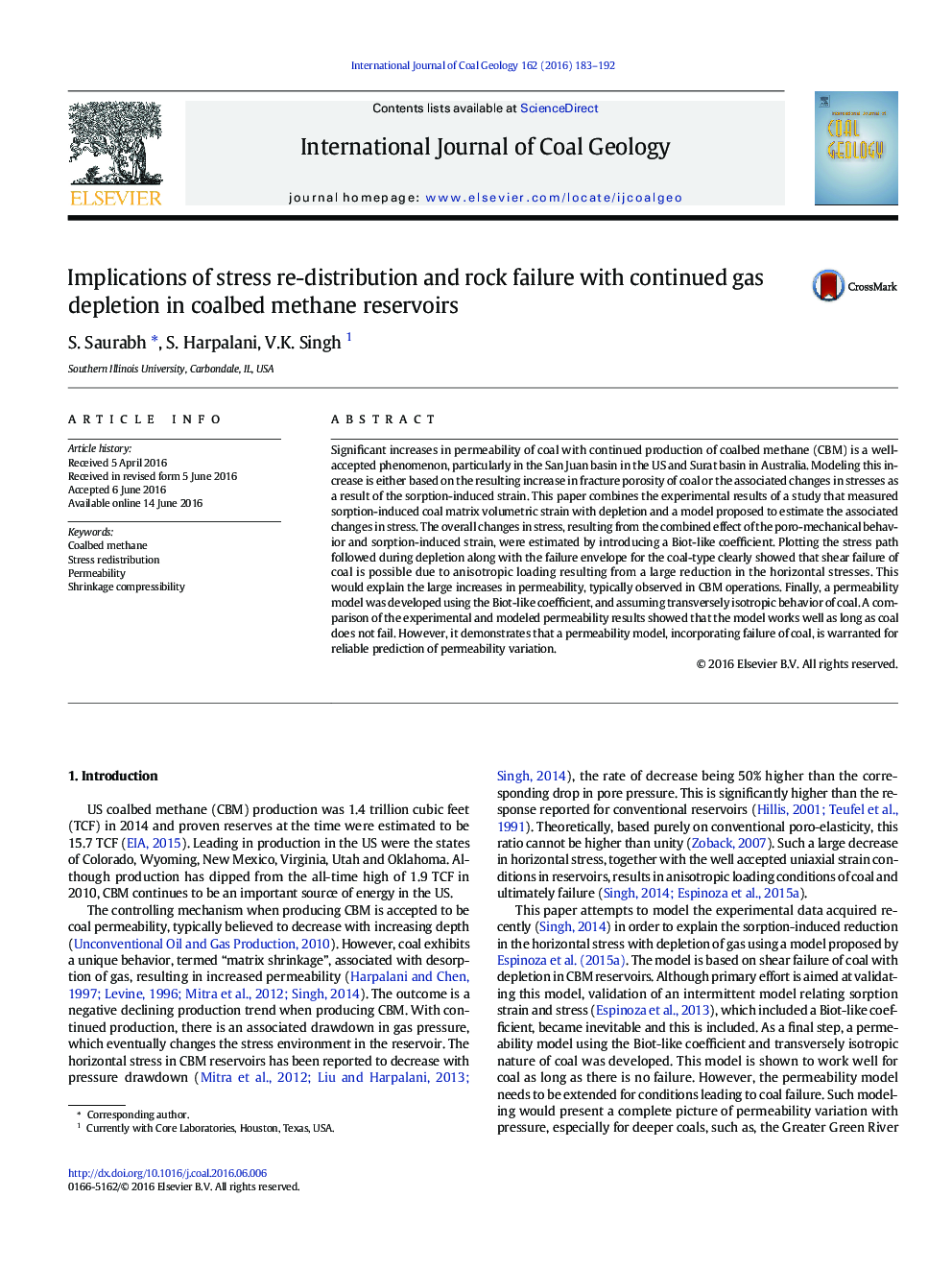| Article ID | Journal | Published Year | Pages | File Type |
|---|---|---|---|---|
| 8123876 | International Journal of Coal Geology | 2016 | 10 Pages |
Abstract
Significant increases in permeability of coal with continued production of coalbed methane (CBM) is a well-accepted phenomenon, particularly in the San Juan basin in the US and Surat basin in Australia. Modeling this increase is either based on the resulting increase in fracture porosity of coal or the associated changes in stresses as a result of the sorption-induced strain. This paper combines the experimental results of a study that measured sorption-induced coal matrix volumetric strain with depletion and a model proposed to estimate the associated changes in stress. The overall changes in stress, resulting from the combined effect of the poro-mechanical behavior and sorption-induced strain, were estimated by introducing a Biot-like coefficient. Plotting the stress path followed during depletion along with the failure envelope for the coal-type clearly showed that shear failure of coal is possible due to anisotropic loading resulting from a large reduction in the horizontal stresses. This would explain the large increases in permeability, typically observed in CBM operations. Finally, a permeability model was developed using the Biot-like coefficient, and assuming transversely isotropic behavior of coal. A comparison of the experimental and modeled permeability results showed that the model works well as long as coal does not fail. However, it demonstrates that a permeability model, incorporating failure of coal, is warranted for reliable prediction of permeability variation.
Related Topics
Physical Sciences and Engineering
Earth and Planetary Sciences
Economic Geology
Authors
S. Saurabh, S. Harpalani, V.K. Singh,
